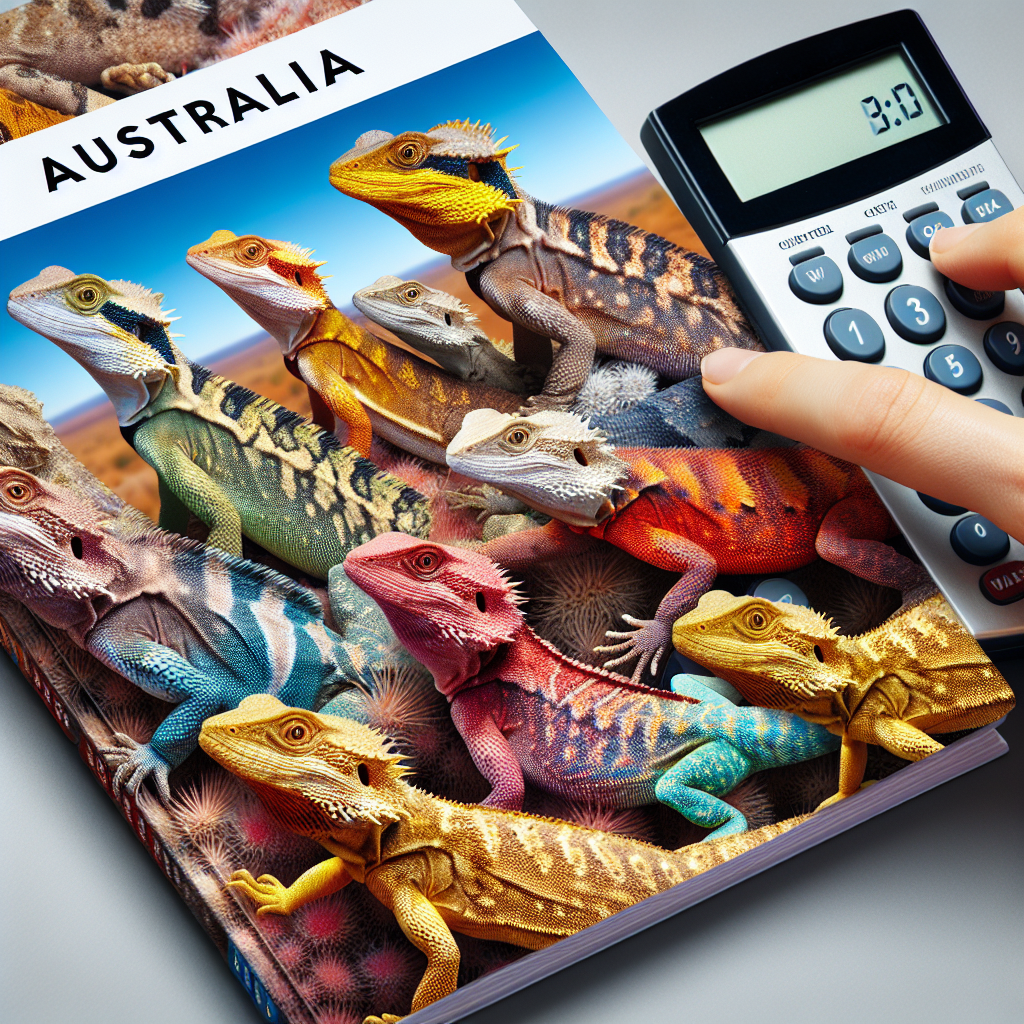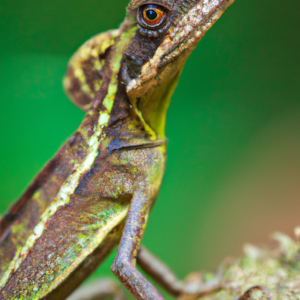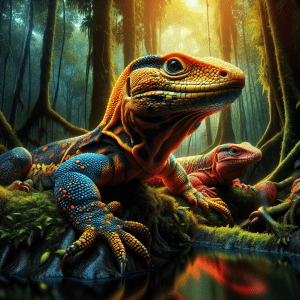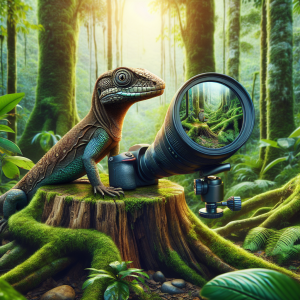Exploring the Diverse Lizard Species of Australia
Have you ever marveled at the incredible diversity of lizard species in Australia? It’s truly a fascinating world out there! From the vibrant colors of the Eastern Bearded Dragon to the elusive patterns of the Boyd’s Forest Dragon, Australian lizards never fail to captivate our imagination.
One thing that makes Australian lizards stand out is their unique adaptations to the diverse environments across the continent. Whether you’re exploring the arid Outback or the lush rainforests of Queensland, you’re bound to encounter a stunning array of lizard species that have evolved to thrive in their specific habitats.
Speaking of habitats, did you know that Australian lizards can be found in a wide range of ecosystems, from deserts to coastal regions? It’s amazing how these resilient creatures have adapted to survive in some of the harshest conditions on Earth. The next time you spot a lizard basking in the sun or darting across the rocks, take a moment to appreciate the tenacity and beauty of these remarkable creatures.
When diving into the world of Australian lizards, a reliable field guide is your best companion. A well-structured guide can help you identify different lizard species, understand their behaviors, and even learn about their conservation status. So, whether you’re a seasoned herpetologist or just a curious nature enthusiast, having a quality field guide on hand can enhance your lizard-watching adventures in Australia.
As you embark on your journey to explore the diverse lizard species of Australia, remember to tread lightly and respect the natural environment. Observing these magnificent creatures in their natural habitat is a privilege, and by practicing responsible wildlife viewing, we can ensure that future generations can also enjoy the wonders of Australian lizards.
Why Australian Lizards Are Unique
Australian lizards are truly fascinating creatures, each with its unique characteristics that set them apart from their counterparts around the world. One interesting fact about Australian lizards is their remarkable diversity, with over 800 species found across the continent. It’s incredible to think about the wide range of shapes, sizes, and behaviors that these reptiles exhibit in their natural habitats.
When delving into why Australian lizards are so unique, it’s essential to consider the continent’s isolated evolution. Australia’s geographic isolation has led to the development of distinct species that have adapted to various environments over millions of years. This isolation has resulted in a plethora of endemic lizard species that can only be found in Australia, making the country a hotspot for lizard enthusiasts and researchers alike.
One practical tip when exploring the uniqueness of Australian lizards is to pay attention to their specialized adaptations. From the frilled neck of the frilled lizard to the vibrant colors of the blue-tongued skink, each species has evolved specific traits to thrive in their surroundings. By understanding these adaptations, we can gain a deeper appreciation for the intricate ways in which these lizards have adapted to survive in the Australian landscape.
So, the next time you come across a lizard field guide focused on Australia, take a moment to marvel at the incredible diversity and uniqueness of the country’s lizard species. Whether you’re a seasoned herpetologist or just a curious nature enthusiast, there’s always something new and exciting to learn about Australian lizards. Happy exploring, and may you uncover the hidden wonders of the lizard world down under!
Key Features of Lizard Field Guide Australia
Have you ever tried to identify a lizard in the wild and found yourself stumped by its features? That’s where a reliable Lizard Field Guide Australia comes in handy! These guides are like treasure troves filled with valuable information about the fascinating reptiles that roam the Australian outback.
Imagine this: you’re out in the bush, and you spot a lizard darting across the path. Is it a frilled lizard or perhaps a blue-tongue skink? With a field guide in hand, you can quickly reference the key features that distinguish one species from another. These guides often include detailed descriptions, illustrations, and photographs to help you accurately identify the various types of lizards you may encounter.
One interesting fact about Lizard Field Guide Australia is that they not only aid in identification but also offer insights into the behavior, habitat preferences, and geographic distribution of different lizard species. By understanding these aspects, you can gain a deeper appreciation for the diverse ecosystems that support these reptiles and the crucial roles they play in the environment.
Moreover, Lizard Field Guide Australia can be a valuable tool for conservation efforts. By educating the public about the importance of protecting lizard populations and their habitats, these guides help raise awareness about the threats faced by these creatures and the measures needed to ensure their survival.
So, next time you’re planning a lizard-watching adventure or simply curious about the reptiles in your backyard, consider picking up a Lizard Field Guide Australia. It’s not just a book; it’s a gateway to a world of discovery and appreciation for the incredible diversity of Australian lizards.
IV. Identifying Common Lizard Species in Australia
Imagine coming across a vibrant blue-tongued lizard while hiking through the Australian outback. It’s a sight to behold, and you can’t help but marvel at the unique beauty of these fascinating creatures. That’s the kind of experience you can have when you delve into the world of Australian lizards through Lizard Field Guide Australia.
Identifying common lizard species in Australia can be both exciting and challenging. With over 800 species of lizards found across the continent, each with its own distinctive characteristics, it’s like embarking on a thrilling treasure hunt. Sometimes, they can be elusive, blending seamlessly into their surroundings with their camouflaged skin. Other times, they boldly display their vibrant colors, making a striking impression.
One practical tip for identifying Australian lizards is to pay close attention to their size, shape, coloration, and markings. For instance, the iconic bearded dragon, known for its spiky appearance and the “beard” of scales under its throat, is a popular sight in the arid regions of Australia. By observing these key features and consulting a reliable field guide, you can enhance your lizard-spotting skills and gain a deeper appreciation for the rich diversity of Australian wildlife.
As you immerse yourself in the world of Australian lizards, you might find yourself pondering the significance of these reptiles in the ecosystem. How do they contribute to the delicate balance of nature, and what can we learn from their adaptation strategies? By exploring these questions and observing lizards in their natural habitats, you can gain insights into the interconnected web of life that sustains our planet.
So, grab your Lizard Field Guide Australia, head outdoors, and embark on a captivating journey of discovery as you unravel the mysteries of Australian lizards. Who knows what fascinating encounters await you in the wilds of this extraordinary continent!
Conservation Efforts for Australian Lizards
When it comes to observing lizards in the wild, it’s all about patience, keen observation, and a sense of adventure. Picture this – you’re out in the Australian bush, the sun warming your skin, and the rustling of leaves hinting at the hidden creatures around you. That’s the magic of lizard watching in Australia.
One fascinating fact about Australian lizards is their incredible diversity. From the iconic frilled-neck lizard to the elusive thorny devil, each species has its own unique characteristics that make them a wonder to behold. When you’re out in the wild, keep your eyes peeled for these lizard beauties – you never know what you might stumble upon!
Now, here’s a practical tip for all aspiring lizard enthusiasts out there: silence is key. Lizards are incredibly perceptive creatures, and any sudden movements or loud noises can send them scurrying away in a flash. So, when you’re on the lookout for these reptilian wonders, remember to move slowly, speak softly, and blend into your surroundings like a true lizard whisperer.
But let’s ponder on this – why are Australian lizards so important? Beyond their captivating beauty, these creatures play a crucial role in the ecosystem as both predators and prey. By understanding and appreciating them, we can contribute to the conservation efforts that aim to protect their habitats and ensure their survival for generations to come.
So, next time you find yourself in the midst of the Australian wilderness, take a moment to appreciate the intricate world of lizards around you. Embrace the thrill of the hunt, the joy of discovery, and the sense of wonder that comes with observing these remarkable creatures in their natural habitat. Happy lizard watching, mate!
Tips for Observing Lizards in the Wild
Have you ever tried observing lizards in the wild? It can be quite an exhilarating experience! Imagine being amidst the Australian outback, surrounded by the diverse flora and fauna, and spotting a majestic lizard basking in the sun. That feeling of connection with nature is truly incomparable.
When it comes to observing lizards in their natural habitat, there are a few tips that can enhance your experience. Firstly, it’s essential to move slowly and quietly. Lizards are known for their keen senses, and sudden movements can startle them. By maintaining a calm and gentle approach, you’ll have a better chance of observing them up close without causing any disturbance.
Another important tip is to choose the right time for lizard watching. Lizards are ectothermic creatures, meaning they rely on external sources of heat to regulate their body temperature. Therefore, they are most active during the warmer parts of the day. Early mornings and late afternoons are ideal times to spot lizards as they come out to bask in the sun or hunt for food.
Additionally, pay attention to the habitat preferences of different lizard species. Some lizards prefer rocky outcrops, while others thrive in lush vegetation. By understanding the habitat preferences of various species, you can narrow down your search and increase your chances of encountering different types of lizards.
Lastly, don’t forget to bring along a good pair of binoculars or a camera to capture those magical moments. Observing lizards in their natural environment can offer valuable insights into their behavior and ecology, making it a rewarding and educational experience for nature enthusiasts.
So, next time you’re out exploring the Australian wilderness, keep these tips in mind and embark on a lizard-watching adventure that will leave you in awe of the fascinating world of these creatures.
Top Destinations for Lizard Watching in Australia
Have you ever thought about going on a lizard-watching adventure in Australia? It’s an experience like no other. Picture yourself surrounded by the rugged beauty of the Outback or the lush rainforests of Queensland, eagerly scanning the terrain for a glimpse of these fascinating reptiles.
Australia is renowned for its diverse lizard species, making it a prime destination for wildlife enthusiasts and nature lovers alike. From the iconic bearded dragon to the elusive thorny devil, the country is teeming with unique reptilian inhabitants waiting to be discovered.
When planning your lizard-watching expedition in Australia, it’s essential to consider the best locations for optimal sightings. Imagine venturing into the heart of the Red Centre, where the red earth contrasts with the vibrant hues of the local lizard population. Or perhaps you prefer the coastal regions, where you can observe marine iguanas basking in the sun on rocky outcrops.
To enhance your lizard-watching experience, remember to pack essential items such as a reliable field guide, binoculars for long-distance viewing, and a camera to capture those memorable moments. By being well-prepared and knowledgeable about the local lizard species, you can make the most of your wildlife adventure.
But here’s a fun fact to pique your interest: did you know that some Australian lizards have the ability to change color depending on their surroundings or mood? Imagine witnessing this remarkable phenomenon firsthand during your lizard-watching excursion!
So, as you plan your next outdoor adventure, why not consider embarking on a lizard-watching journey in Australia? It’s a unique opportunity to connect with nature, learn about diverse wildlife, and create unforgettable memories in the land Down Under. Get ready to explore the wonders of Australian lizards and immerse yourself in the beauty of the natural world.
Embracing the Wonders of Australian Lizards
Have you ever wondered where you can witness the incredible world of Australian lizards up close and personal? Well, let me tell you about the top destinations for lizard watching in Australia that will leave you in awe.
Picture this: you’re trekking through the rugged landscapes of the Australian outback, the sun beating down on your back as you navigate through the vibrant flora and fauna. Suddenly, a flash of color catches your eye – it’s a vibrant Eastern Blue-tongue Lizard basking in the sun. The thrill of spotting these fascinating creatures in their natural habitat is an experience like no other.
Now, here’s an interesting fact for you – did you know that Australia is home to over 800 species of lizards, making it a hotspot for lizard enthusiasts and wildlife lovers? From the iconic Bearded Dragon to the elusive Frilled Lizard, each species has its own unique charm that will captivate your imagination.
When planning your lizard-watching adventure, it’s essential to choose the right destinations that offer optimal opportunities for sightings. Whether you’re exploring the lush rainforests of Queensland or the arid deserts of Western Australia, each region has its own distinct lizard species waiting to be discovered.
To make the most of your lizard-watching experience, remember to pack essential items such as binoculars, a field guide, and plenty of water to stay hydrated during your expedition. Additionally, joining guided tours or eco-friendly excursions can provide you with valuable insights from expert guides while minimizing your impact on the environment.
So, are you ready to embark on a thrilling journey through the diverse landscapes of Australia in search of its enchanting lizard inhabitants? Pack your bags, lace up your boots, and get ready to witness the magic of Australian lizards in their natural element. Get ready to uncover the hidden treasures of the land Down Under and create memories that will last a lifetime.




